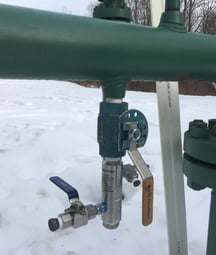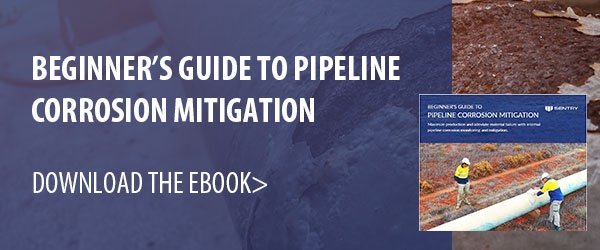
Internal metal corrosion in hazardous liquid, gas transmission and gas-gathering applications is inevitable and continues to cause leaks and catastrophic failures. Due to the fact that internal corrosion is time dependent, the number of incidents could be increasing due to aging pipeline infrastructure. Such disasters can damage the environment and cause costly downtime and waste in pipeline productivity – in addition to astronomical cleanup costs.
Meeting the Challenges of Corrosion Detection
Whether its storage facilities, offshore platforms, land pipeline or vessels, corrosion monitoring and mitigation is essential for ensuring safe operation and reliable supplies of natural gas, petroleum or hazardous liquids. A potential failure in pipeline integrity must be identified and mitigated before a catastrophe occurs. Pipeline corrosion detection is vital to protecting public safety, the environment and company assets. Corrosion monitoring also helps improve process equipment reliability and predict maintenance and avoid breakdowns and downtime.
Meeting the challenges of corrosion detection and mitigation requires collecting samples within a pipeline or other pressurized system to examine and measure corrosion and other contaminants. An essential tool to do that is a drip pot assembly to collect samples for analysis without interruption to the system under pressure. The drip pot assembly includes a container with an interior reservoir for receiving a liquid sample, and a valve assembly coupled to the drip pot.

Drip pots incorporate a bleeder valve on the main chamber to relieve process pressure so the sample then can be drawn safely from the sample valve. An optional corrosion coupon can be attached to the bottom of the assembly with a fixed corrosion coupon holder for simultaneous corrosion analysis and sample collection.
In order for drip pots to provide safe data collection they need to be well-engineered, made from non-corrosive 316L stainless steel components and pressure rated for the application, for example, up to 6,000 psi.
Drip pots are designed to collect sample of solids and liquids at flowing conditions. There are various volumes of drip pot available to ensure the correct composite is collected over a given sample period.
The drip pot assemblies provide a safe method to collect a composite sample from a closed system to assess corrosion, including:
- Amount of liquid in the system
- Identification of the liquids
- Presence of CO2, H2S, water and acids*
- Microbial activity (via bio screen option)**
- Corrosion rate (via weight loss coupon)***
- Presence of iron that indicates interior corrosion or erosion
* Liquids collected could be any combination of water, acids, compressor oil, glycol, methanol, corrosion inhibitors, etc.
** The drip pots provide a safe harbor for the microbes to collect and colonize at flowing process conditions, but undisturbed by the process flow and maintenance procedures performed on the pipeline such as pigging.
*** Corrosion rate monitoring via a weight loss coupon within the safe zone of the drip pot assembly circumvents the need to retract and insert coupons prior to and after the pigging process.
Drip Pots - An Effective Corrosion Monitoring Tool
Glycol, methanol corrosion inhibitors and CO2 and H2S scavengers are all products intentionally added to the process to mitigate corrosion and corrosive contaminates. Samples from drip pots are used in the corrosion quantification and qualification process to determine which chemicals and the amount needed to mitigate corrosion.
After a sample is collected in a drip pot, it’s transferred to a transportable container to be sent to a lab for analysis. During the transfer process a technician isolates the drip pot assembly from the process by closing the process isolation valve on the pipeline. The technician then depressurizes the sample assembly and draws off the sample through a large ported draw-off valve. A threaded plug from the full opening bottom section is removed. This plug incorporates a coupon holder and or bio element which can be changed. With the plug removed, the pot can be easily cleaned prior to recommissioning the system for the next sampling event.
Drip pots are an effective corrosion monitoring tool that ensures best practices are implemented to determine whether to repair or replace pipelines, prevent catastrophic leaks and system failures, extend asset life and save money.
Application information courtesy of Lance Witt, Integrity Measurement & Control.
NACE - CORROSION 2018
Sentry Equipment will be exhibiting at the NACE CORROSION 2018 Conference & Expo in Nashville, March 25-28. See us in Booth #1418. CORROSION is the world’s largest corrosion conference and exposition focused on the prevention and mitigation of corrosion. It attracts corrosion engineers, scientists, researchers, and other professionals from over 60 countries for technical education and knowledge exchange




